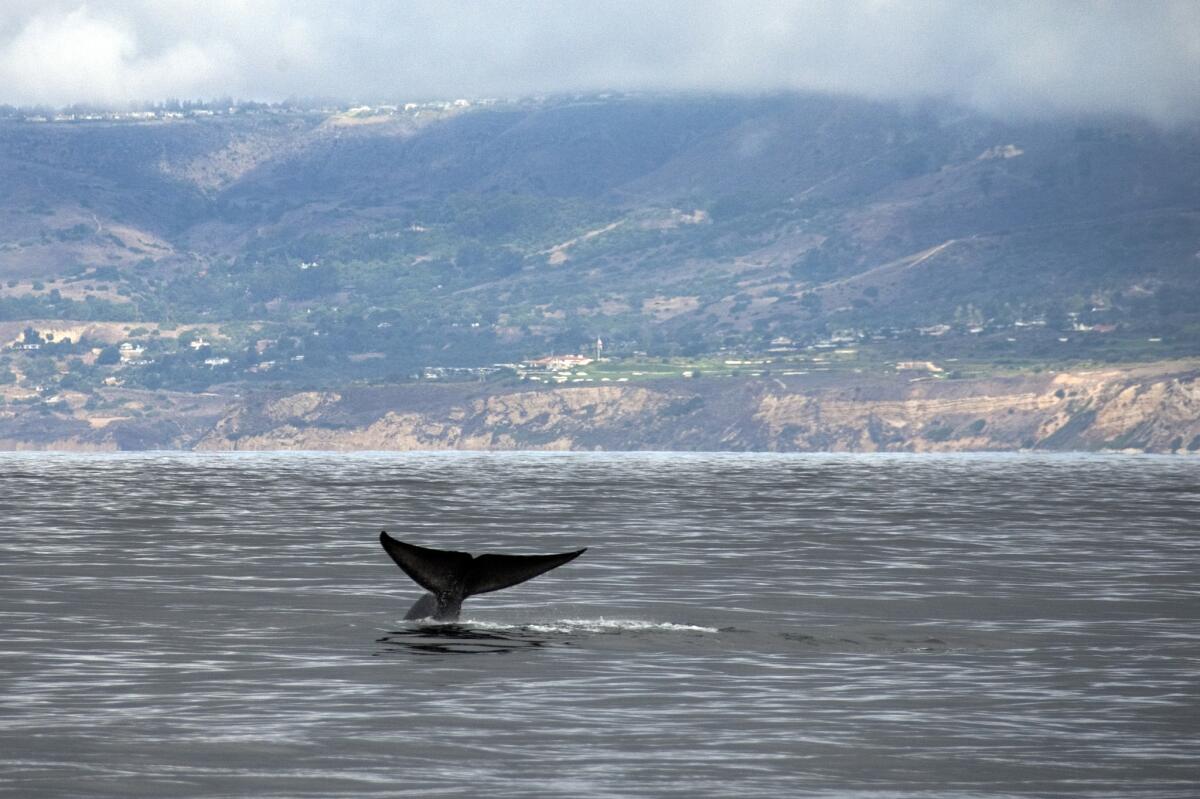Ocean predators’ West Coast hot spots at risk despite sanctuaries, study says

- Share via
Scientists spent years mapping where top ocean predators gather to feed in large numbers along the West Coast in an attempt to better understand the threats they face from humans.
Using electronic tags, researchers tracked the movements of whales, sea lions, sea turtles and other species to find where they overlap most with two dozen man-made pressures, including warming and acidifying waters, fishing, pollution and shipping.
The good news? Many of the predators’ most threatened hangouts, they found, are already in marine sanctuaries, notably the Monterey Bay National Marine Sanctuary that stretches along the Central California coast from San Francisco to Cambria.
“The bad news is there are a number of hot spots where these animals are in high numbers but there is a lot of potential human conflicts,” said Dan Costa, a biology professor at UC Santa Cruz and co-author of the article published in Nature Communications.
That includes areas off the coast where leatherback sea turtles could get caught in fishing equipment, blue whales are at risk of colliding with cargo ships and albatrosses might ingest floating garbage.
Some of those hot spots are in unprotected waters off Northern California. That could change under a proposal to expand two national marine sanctuaries -- Gulf of the Farallones and Cordell Bank -- north to Point Arena, one of the hot spots identified in the study.
Researchers focused on the California Current, which moves south along the West Coast from British Columbia to Baja California and is home to some of the most abundant and diverse marine life in the world. It’s a band of ocean habitat so productive that predators travel across the Pacific to feed there and marine biologists refer to its nutrient-rich waters as the “Blue Serengeti.”
Among the hot spots for predators and human activity were California’s Central Coast, where marine mammals and leatherback sea turtles congregate, and the central Oregon coast, which attracts seabirds. Predators favor prominent coastal headlands such as Point Arena, Cape Mendocino and Point Conception because of upwelling that churns up nutrients from the cold, deep ocean.
Marine sanctuaries were designated primarily to protect marine waters from offshore oil development and -- unlike marine protected areas -- do not place restrictions on fishing.
Even so, identifying these areas of concern for predators could be a first step toward strengthening protections where they need it the most, said marine biologist Sara Maxwell, a postdoctoral scholar at Stanford University who led the research.
“The political reality is that you can only protect so many areas, and this allows us to understand where we’re going to get the most bang for our buck,” Maxwell said. “Hopefully, the next step will be working to more directly protect predators.”
Twitter: @tonybarboza







